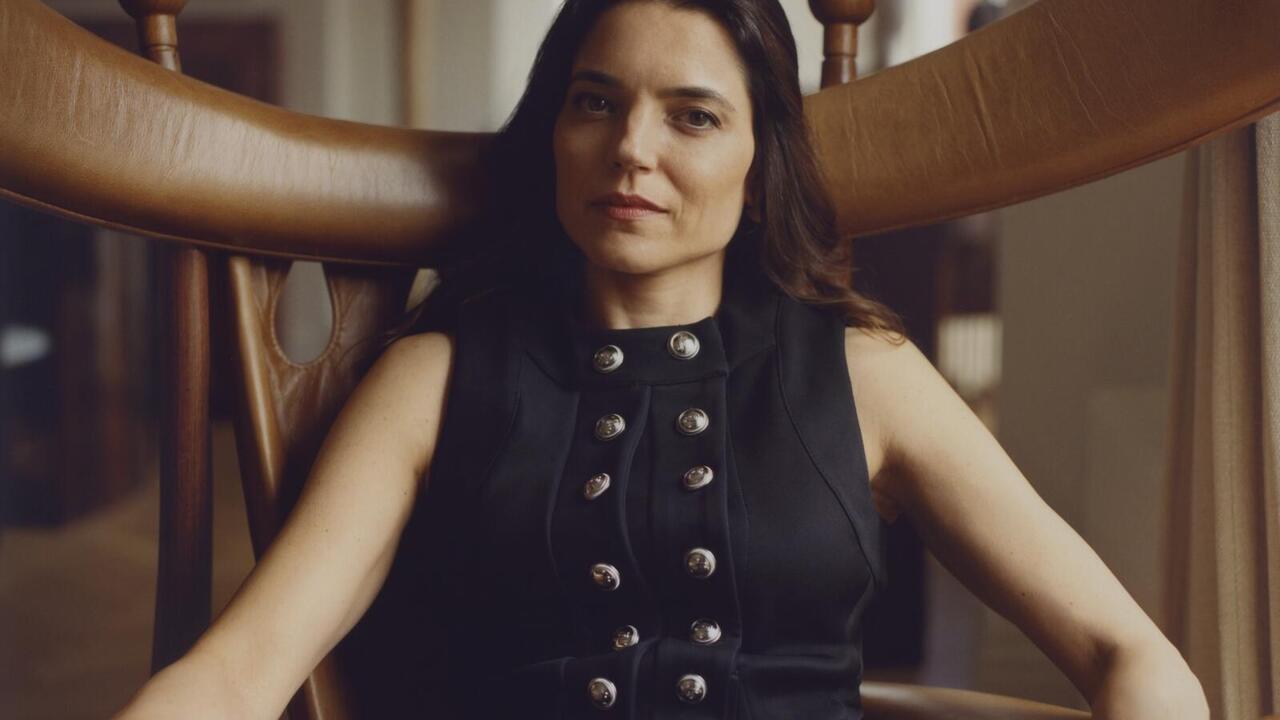Beyond Words
Gesellschaft für Aktuelle Kunst
Gesellschaft für Aktuelle Kunst

How can one express something in words and pictures that cannot be expressed in either words or pictures alone? This paradoxical question has provided a recurring motif in art since the 1970s. It was no surprise that the curators Yvonne Bialek and Janneke de Vries chose the language-based work of the conceptual artist Lawrence Weiner as an art historical anchor for this group show focusing on possibilities for relating words and pictures.
The text Weiner painted in 1991 on the outside wall shared by GAK and the Neues Museum Weserburg – HAVING BEEN BUILT ON SAND / WITH ANOTHER BASE (BASIS) IN FACT // AUF SAND GEBAUT / TATSÄCHLICH (AUS) AUF ANDEREM GRUND (work originally realized in 1973) – acted as the prelude to the exhibition Beyond Words. Inside, one was welcomed by Karolin Meunier’s video Auto Description Model (2007): in a medium shot, we see a young woman standing in front of a whiteboard trying to explain in theory the practice of writing to her imaginary audience. Although her pseudo-scientific diagram is clear enough at first, it undergoes a metamorphosis in the course of the lecture and ends up as an abstract picture devoid of meaning. In this work, Meunier highlights both the power of spoken words and the shortcomings of her picture of words; she documents the limits of what can be represented while making us aware of the gap that exists between the spoken word and images of speech.

A Room for One Alone / 430 libraries_, 2011
The next room was dominated by objects, sculptures and installations shaped out of words. Jacob Dahl Jürgensen’s three abstract steel sculptures Figures of Speech (2012) stood around in the centre of the space like rusting valet stands. These non-functional, almost head-height works translate the rhetorical devices into sculpture while referring to their decorative function in speeches. Kajsa Dahlberg’s Ein Zimmer für sich / Ein eigenes Zimmer / Ein Zimmer für sich allein / Vierhundertdreißig Bibliotheken (A Room of One’s Own / One’s Own Room / A Room for One Alone / 430 libraries, 2011) appeared on the wall behind Jürgensen’s sculptures, throwing them into relief. Originally produced for last year’s Based in Berlin show, Dahlberg’s work features row after row of bright yellow booklets stretching over several shelves of a wall-mounted unit. The pages – filled with underlining, circling, exclamation and question marks as well as comments scribbled in the margins – were photocopied and superimpossed from countless library copies of Virginia Woolf’s classic A Room of One’s Own (1929). The sum of their individual notations form a collective para-text and render the process of reading visible as a picture.
These successful reflections of the curatorial concept were followed by the museum’s main space, where the show lost much of its visual impact and became thematically dissipated. This space was dominated by Jesse Ash’s tent-like sculpture 45 Minutes (2012), which looks like a three-dimensional Colour Field painting but is based on a computer-generated 3D model created by translating the gesticulations made by Britain’s former prime minister Tony Blair during a speech – namely, the factually incorrect ‘45-minute claim’ speech he gave in 2002 before Britain entered the Iraq War. But this connection to the show’s theme only became clear after reading the wall label for the work; otherwise it would have been impossible to establish a link.
The exhibition finished in a kind of dead-end with Kitty Kraus’s text and floor installation about the history of decapitation (Dekaputkapitalisation, 2006/2012). Neither the copy-and-paste text loops nor the scalp-like copper helmet showed any sign of what the curators referred to as the ‘interplay between what can be said and what can be seen’. Here, the translations of language into visual terms became overly concrete. To evoke Weiner’s work on the museum’s outer wall, some works were built on a sandy ground linking what can be said too directly with what can be seen. The strength of this exhibition lay in the more process-oriented and sculptural works which sought to highlight or to give shape to the gap between visual appearance and linguistic description – without filling that gap with narrative.
Translated by Nicholas Grindell















